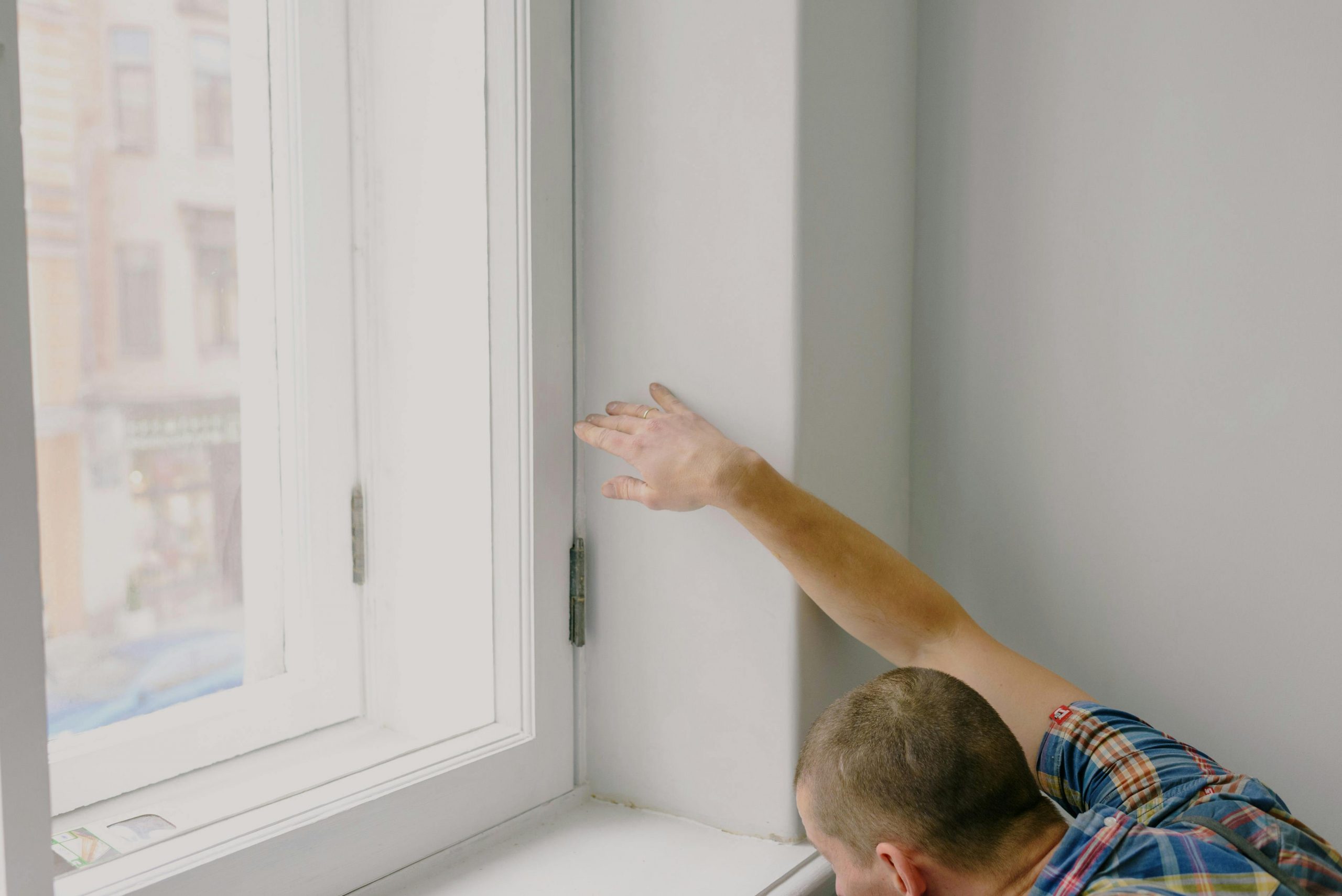
-
Preparation prevents costly damage – Proactively inspecting and maintaining your home reduces the risk of expensive repairs after storms.
-
Safety first – Securing structures, checking electrical systems, and reinforcing weak areas helps protect your family during severe weather.
-
Focus on vulnerable areas – Roofs, windows, doors, basements, and outdoor structures are particularly susceptible to storm damage and should be prioritized.
-
Regular inspections matter – Reviewing your home before each season and after major weather events ensures problems are caught early.
-
Emergency readiness is key – Having a well-stocked kit, evacuation plan, and accessible contacts improves safety and reduces stress.
-
Know when to call professionals – Some tasks, like electrical work or major structural repairs, require expert help to avoid accidents and costly mistakes.
As the seasons change, the weather can bring unexpected challenges to your home. From heavy rains and flooding to strong winds and hail, being proactive can save you thousands in repairs and keep your family safe. Creating a solid home maintenance checklist for seasonal emergencies ensures that your house is prepared no matter what nature throws your way.
Why Seasonal Emergency Prep Matters
Most homeowners only think about emergencies after they happen. Unfortunately, storms and weather hazards don’t give warnings, and damages can escalate quickly. Seasonal emergency prep isn’t just about preventing financial loss—it’s about ensuring safety, comfort, and peace of mind.
Proper preparation allows you to anticipate potential issues, plan how to handle them, and reduce stress during chaotic situations. Even small actions, like checking gutters or securing outdoor items, can have a big impact when severe weather hits.
Consider these benefits:
-
Prevent costly damage – By inspecting your roof, foundation, and other vulnerable areas before storms, you can fix small issues before they become major repairs.
-
Reduce the risk of injury – Loose debris, weak structures, and faulty wiring can become dangerous during storms. Preventive measures keep your family safe.
-
Streamline insurance claims – Documenting preventive maintenance and completed checks makes claims faster and less stressful if damage occurs.
-
Maintain home value – Regular seasonal prep ensures your property stays in good condition, avoiding depreciation due to neglect.
-
Peace of mind – Knowing your home is ready for the worst allows you to focus on family safety and comfort rather than emergency repairs.
What Are the Key Areas to Inspect Before Storm Season?
When preparing for severe weather, not all parts of your home need the same attention. Focusing on the right spots can make your efforts more effective and save time. Some key areas for home maintenance include:
-
Roof and gutters – Check for loose shingles, cracked flashing, and clogged gutters. Debris can block water flow, causing leaks or structural damage.
-
Siding and exterior walls – Look for cracks, peeling paint, or signs of water damage. Even small openings can allow moisture in during heavy rain.
-
Windows and doors – Inspect seals, caulking, and locks to prevent drafts and water intrusion. Check for warped frames or cracked glass.
-
HVAC systems – Ensure proper operation and schedule professional servicing if needed. Clean filters and check vents to prevent system strain during extreme temperatures.
-
Basement and foundation – Look for cracks, moisture spots, or signs of previous flooding. Reinforce drainage and waterproofing where necessary.
-
Outdoor structures – Fences, decks, and sheds should be secure and free of hazards. Loose boards, rusted nails, or leaning structures can become dangerous during strong winds.
By systematically checking these areas, you reduce the risk of unexpected damage and ensure your home is better prepared for storms.
How Can You Protect Your Deck from Damage?
Decks are often overlooked but can be highly vulnerable during storms. Many homeowners face problems like rotting boards, loose nails, or water pooling, which can worsen when bad weather strikes. Common deck issues include:
-
Wood rot or splintering – Prolonged exposure to moisture weakens the wood.
-
Loose or rusted nails and screws – Fasteners can fail, compromising structural integrity.
-
Weak railings or steps – These can collapse under pressure during strong winds or heavy snow.
-
Accumulated debris – Leaves and dirt can block drainage, causing water to pool and accelerate rot.
To prevent damage, consider:
-
Sealing the deck annually with a water-resistant product.
-
Removing debris regularly and cleaning between boards.
-
Checking railings, posts, and steps for stability.
-
Reinforcing areas that show signs of wear or rot before storm season.
These preventive steps not only protect your deck but also reduce hazards for family and guests.
Why Electrical Safety Should Be a Priority
Storms can create serious electrical hazards, from power surges to exposed wires. Handling electrical issues incorrectly can result in fires or electrocution, so it’s crucial to understand your limits. This is one of the reasons why you should hire a professional electrician.
A licensed professional can:
-
Inspect wiring and outlets for vulnerabilities caused by age, wear, or prior damage.
-
Install surge protectors and grounding systems to protect electronics and appliances during storms.
-
Secure outdoor electrical components like lighting, outlets, and pool equipment against weather exposure.
-
Provide guidance on emergency shut-off procedures so your family knows how to cut power safely if needed.
Even if you are handy with basic electrical tasks, having a professional inspect your system annually can prevent accidents and save you from costly repairs.
How to Safeguard Your Basement from Flooding
Basements are often the first part of a home to suffer during heavy rains or flash floods. Proper preparation can minimize water damage and protect valuable items stored below ground level. Basement waterproofing is essential, especially in areas prone to heavy rainfall or rising water tables.
Tips for protecting your basement include:
-
Inspect and clean gutters and downspouts – Ensure water is directed away from the foundation.
-
Seal cracks in walls and floors – Use waterproof compounds to prevent moisture seepage.
-
Install a sump pump and test it regularly – Make sure it is functioning before storms arrive.
-
Elevate electrical panels, appliances, and storage off the floor to avoid damage from minor flooding.
-
Consider a backup battery system for pumps to keep water removal active during power outages.
These steps help maintain a dry, safe basement and prevent long-term structural problems.
Are Windows and Doors Secure Enough?
Windows and doors are major entry points for both water and wind damage. Small issues can quickly escalate during storms, so a detailed inspection is key.
-
Replace worn-out weather stripping to minimize leaks and drafts.
-
Reinforce locks and latches to withstand strong gusts.
-
Consider storm shutters or impact-resistant windows in high-risk areas.
-
Remove loose objects nearby that could shatter glass or damage frames in high winds.
Regular attention to these details ensures your home remains secure, keeping both water and wind from causing costly damage.
Roof Inspection and Maintenance Tips
Your roof is your home’s first line of defense against storms. Neglecting it can lead to leaks, mold growth, and structural damage. Here’s a detailed checklist:
-
Look for missing or damaged shingles – Replace immediately to prevent leaks.
-
Check flashing around chimneys, vents, and skylights – Ensure a watertight seal.
-
Clear gutters of leaves and debris – Proper water flow prevents ice dams and water damage.
-
Ensure downspouts direct water away from the foundation – Avoid basement flooding and soil erosion.
-
Trim overhanging branches – Prevent tree limbs from falling during high winds.
Regular maintenance and timely repairs extend your roof’s life and protect your home during severe weather events.
How to Prepare Outdoor Areas and Landscaping
Outdoor spaces can quickly become hazards if not maintained. Loose objects, weak structures, and poorly maintained landscaping can damage your property or your neighbors’ homes.
-
Anchor or store patio furniture, grills, and garden equipment – Prevent them from becoming airborne projectiles.
-
Inspect fences and gates – Repair leaning or loose components.
-
Prune trees and shrubs – Remove dead branches and weak limbs.
-
Clear walkways and driveways – Reduce debris accumulation that can cause injury or block access.
-
Secure sheds, garages, and other outdoor storage areas – Protect against wind and water damage.
A little preparation goes a long way in reducing storm-related hazards outdoors.
Should You Have an Emergency Kit at Home?
Being physically prepared is just as important as protecting your property. An emergency kit ensures your family can stay safe and comfortable during power outages or evacuations.
Include essentials like:
-
Flashlights and extra batteries
-
Non-perishable food and bottled water
-
First aid supplies
-
Blankets and weather-appropriate clothing
-
Backup phone chargers and battery packs
-
Important documents in waterproof containers
Having a well-stocked kit ensures that even in the worst-case scenario, your family is equipped to handle the situation calmly.
How Often Should You Review Your Home Maintenance Checklist?
Storm prep isn’t a one-time task. Seasonal maintenance should be reviewed at least twice a year:
-
Spring – Prepare for heavy rains, storms, and summer heat.
-
Fall – Get ready for cold weather, ice, and winter storms.
Additionally, inspect after major weather events to catch damage early. Document each inspection to track improvements and recurring issues. Maintaining a consistent schedule ensures your home remains resilient year-round.
Can You Do Everything Yourself or Do You Need Professionals?
While many tasks can be handled by homeowners, some require professional expertise to ensure safety and compliance with local codes.
Areas best left to experts include:
-
Electrical systems and wiring inspections
-
Major roof repairs or replacements
-
Foundation or structural issues
-
Large-scale waterproofing or drainage projects
Knowing when to hire a professional saves time, reduces risk, and often prevents costly mistakes.
Tips for Keeping Your Home Maintenance Checklist Organized
Organization is key to making your checklist actionable and effective. Consider these strategies:
-
Use a binder or folder – Track completed tasks and inspection dates.
-
Create digital reminders – Calendar alerts help maintain seasonal schedules.
-
Include seasonal-specific sections – Makes it easy to tackle relevant tasks efficiently.
-
Take photos of problem areas – Monitor changes over time for proactive maintenance.
An organized approach ensures nothing falls through the cracks when storms approach.
Preparing for Unexpected Weather Hazards
Even with thorough preparation, some weather events are unpredictable. Planning for worst-case scenarios ensures that your family is ready:
-
Have an evacuation plan and know local shelter locations.
-
Keep emergency contact numbers accessible.
-
Identify safe rooms in your home for severe storms.
-
Maintain a list of trusted contractors for urgent repairs.
Being mentally and physically prepared reduces panic and speeds up recovery after weather-related emergencies.
Closing Thoughts
A proactive home maintenance checklist for seasonal emergencies is an essential tool for every homeowner. From inspecting key areas to preparing your basement, roof, and outdoor spaces, small actions now can prevent major headaches later. Incorporating safety measures, professional inspections, and emergency kits ensures that your home—and your family—remain protected against storms and weather hazards all year long.






